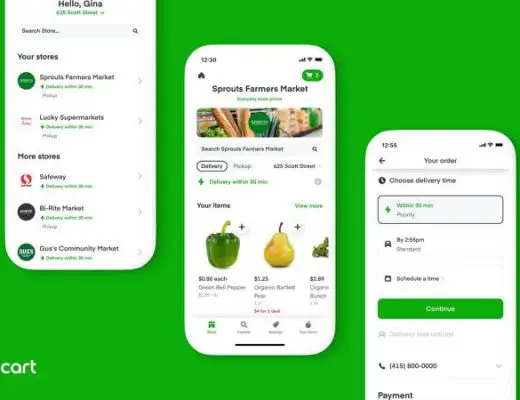
CommonCentsMom.com is advertiser-supported: we may earn compensation from the products and offers mentioned in this article. However, any expressed opinions are our own and aren't influenced by compensation. The contents of the CommonCentsMom.com website, such as text, graphics, images, and other material contained on this site (“Content”) are for informational purposes only. The Content is not intended to be a substitute for professional financial or legal advice. Always seek the advice of your Financial Advisor, CPA and Lawyer with any questions you may have regarding your situation. Never disregard professional advice or delay in seeking it because of something you have read on this website!
So, you have an outstanding idea for a product – and you hope it’ll bring you a small fortune. You’re willing to launch it into the world to test it. But how do you make sure it’ll beat the competition and succeed?
When it comes to sales, just one word answers this question: marketing. It’s how you make your product stand out. It’s how you promote it and convince your target audience that it’s worth their money. It’s everything.
“But what exactly does it mean in practice? Can you explain the very basics of it all?” Don’t worry: the marketing and entrepreneurship experts at WritePaper have you covered. Let them break down the five key principles you should keep in mind to ace your marketing – and keep your bottom line in the black.
1. 4 Ps Are the Foundation of Any Business
This is one of those classic principles you’ll hear in any marketing 101 class. But that’s for a good reason. No business can run without these four Ps:
- Product. What are you selling? How is it different from anything else on the market? What problem does it solve for your ideal customer? And who is your ideal customer, exactly?
- Price. How much will your product cost? How does the price compare with your competitors? Make sure you factor in all the variable and fixed costs into the final price (rent, website maintenance, raw materials, transportation, labor costs, etc.).
- Place. Where are you going to do business? Will it be exclusively online, or will you have a physical store, too? If you want to focus on selling online, where will it be – on social media, your website, or marketplaces like Amazon or eBay?
- Promotion. What offline and/or online channels will you be using for marketing? What will be your main selling points? What methods and messages will be the best fit for convincing your customer?
2. Your Product Has to Stand Out
No, this doesn’t mean you have to invent something radically new. But you have to make sure your product will be perceived as different from – and better than – all the other options on the market. Otherwise, why would anyone buy what you sell?
Here are three tips on how to make sure you won’t be just “one of the many”:
- Do your homework on the competitors. To stand out, you need to know what you’re up against first. Analyze your direct and indirect competitors, their pros and cons, marketing strategies, as well as what they’ve aced – and what they’ve missed.
- Know your selling points. Now, compare all of that to your product’s strengths and weaknesses. What’s different about your item or service? How is it better than all the others already on the market?
- Create a fresh positioning. Standing out is also a matter of consumers’ perception. Your product has to feel unlike anything else. This is where your storytelling efforts should come in.
3. It’s All About Telling a Story
When it comes to marketing, you have to craft the right message. But no matter how great that sales pitch is, if it still feels like a sales pitch, it won’t be effective.
The reason? Persuasion resistance. In other words, when a person senses you’re trying to convince them, they’ll automatically get on the defensive.
So, you need to convince your ideal customers that your product is their best option without it feeling like you’re trying to persuade them. It’s a tough juggling act, but this is where storytelling shines.
Besides countering the persuasion resistance, storytelling is also more effective because:
- Great stories are more memorable than sales pitches;
- They can easily evoke positive emotions;
- They make your product more relatable and your company – more authentic;
- A good story is inherently entertaining – i.e., more captivating.
4. Customer Retention Is the Ultimate Goal
You might be laser-focused on acquiring new customers. But that’s not the treasure you should be after. Your goal should be to retain customers and make them want to return to you for another purchase.
That’s why “the customer is always right” – this treatment increases the chances they’ll come back. But that’s not the only way you can boost your customer retention rates:
- Understand your ideal customer. Who are they? What do they want? What do they need? Why would they choose your product? The answers to all of these questions (and more) will comprise your buyer personas.
- Think through the customer journey. The journey must be smooth and effortless. If the person has to scratch their head while placing their order on your website, they’ll either give up or choose not to deal with you again.
- Go the extra mile. Your customers will remember the time you’ve made an effort to cater to their needs or preferences. And some stories can make for great word-of-mouth marketing!
- Build a relationship. Keep in touch with your customers – but be careful not to be obtrusive or wearisome in your efforts.
5. Metrics Are Everything
You must already know that you should have a plan for running your business. But that’s not the whole story: you also should define and track a myriad of metrics to test your hypotheses and see what works and what doesn’t in every department.
Here are the eight most crucial metrics that should be on your list:
- Total revenue;
- Fixed and variable costs;
- Customer lifetime value;
- Customer loyalty;
- Return on investment;
- Conversion rates;
- Acquisition numbers;
- Retention rate.

Credit: Photo by Fab Lentz on Unsplash
Final Thoughts
These five principles are just the very basics of selling a product. On top of all of that, you need to take a deep dive into:
- How to design great stories, messages, and calls to action;
- Every single marketing channel and its typical target audience, content, pros, and cons;
- Different types of marketing and when you should use them;
- How to set prices and use discounts, special offers, and giveaways to sell;
- Creating marketing, sales, and business plans;
- The ins and outs of running an online store: the user experience, mobile-friendliness, crucial features;
- The sales funnel and how to apply it to practice.
As you can see, this list is quite long. But, of course, you don’t have to strive to be a one-person band: you can’t excel at everything anyway. So, make sure you have a great team that has your back and wants your product to succeed!







